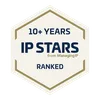How can an Innovation Board help your business?

Intellectual property (IP) rights protect intangible assets such as ideas, inventions, brands, and information. Securing your IP rights can provide several advantages including deterring competitors from copying your ideas or products, turning your knowledge or ideas into a tangible asset, and enhancing the market value of your business. However, many businesses fail to tap into their intellectual capital, leaving it to go to waste. Holding regular innovation boards will help mitigate this and enhance your ability to identify, leverage, and monetise your IP assets.
What is an innovation board?#
An innovation board is a team or individual responsible for developing, coordinating and/or managing the innovation of the business. The innovation is part of the business plan of the company and is intended to grow market share and profits of the business. Of course, the innovation will be dependent on the type of business. For example, the innovation may depend on whether the business offers a product or a service.
An innovation board is useful because it allows people from different areas of the business to exchange ideas regarding IP. The innovation board is also useful for your patent attorney as it provides them with a greater insight to the business and key products. Additionally, your patent attorney may determine fall back options which may be useful during prosecution of a patent application. This is particularly useful when an Examiner cites a document that is very similar to the product that is to be protected.
Who should be on the innovation board?#
Ideally, the innovation board should consist of decision makers who have the authority and skillset to match innovation strategy for business growth. The actual people who sit on the board will largely depend on the size of the business. Examples of who may form part of the innovation board include the COO, CTO, CEO, head of legal, or even a patent attorney. In some situations, an inventor may also be part of the innovation board as they likely have the best insight into the innovation itself.
How frequently should the innovation board meet and how long should it last?#
The frequency and duration of an innovation board largely depends on the cycle of the business. Where is the business in terms of its growth? If the business is closer to launching a new product or if there are any problems regarding prior art or infringement, innovation boards may be more frequent and last longer. If your business is in this position, then a monthly innovation board may be reasonable. If not, a quarterly innovation board should suffice.
What should the innovation board discuss?#
Now that you have established who should be attending the innovation board and how frequently the innovations boards should occur, you should consider what should be discussed at the innovation board meetings. The topics of discussion will largely depend on your business, and we have summarised a few example topics below.
- You should be clear on why IP is important and understand the risks that would be present if IP rights were not pursued. How can you use your IP to carve a market share and compete?
- You should identify whether an invention be patented. This may involve invention mining, which involves identifying inventions within the business. A useful system for invention mining is patent scoring.
- It is important that the board understands the budget available for obtaining, maintaining, and enforcing said IP rights. This point demonstrates the importance of having members of the board present from various areas of the company as this will help facilitate a better understanding of the budget.
- You should consider how the IP is to be used. For example, is the purpose of pursuing IP rights to protect your own products? Is the purpose to control your competitors? Or is the purpose to sell the IP on at a later date or create licensing opportunities. It is useful to review different licensing options as different areas of your company may have different views of who should be licensed to.
- If the purpose of the IP is to protect your own products or control your competitors, you should consider your enforcement approach if a competitor infringes your IP rights. You should consider where your products will be manufactured, sold, or used. This will give you a better idea of which countries IP protection would be most suitable. Additionally, you should take into account where your competitors are location and how aggressive they are.
- On the flip side, you should also consider how to avoid infringing any of your competitors IP rights. This may be a complicated process and in some areas of technology, it may be difficult to know exactly who your competitors are and what IP rights are present in the field. Freedom to operate should be considered if this is a particular worry. Additionally, it may be useful to monitor and understand what your competitors are doing. My colleague, Elaine, has summarised the benefits of freedom to operate searches here.
- It may also be useful to consider Patent Box tax reduction and R&D tax credits. The Patent Box system allows qualifying companies to substantially reduce corporation tax on profits made through their patents. More information regarding the Patent Box system can be found here: https://www.murgitroyd.com/att...




















